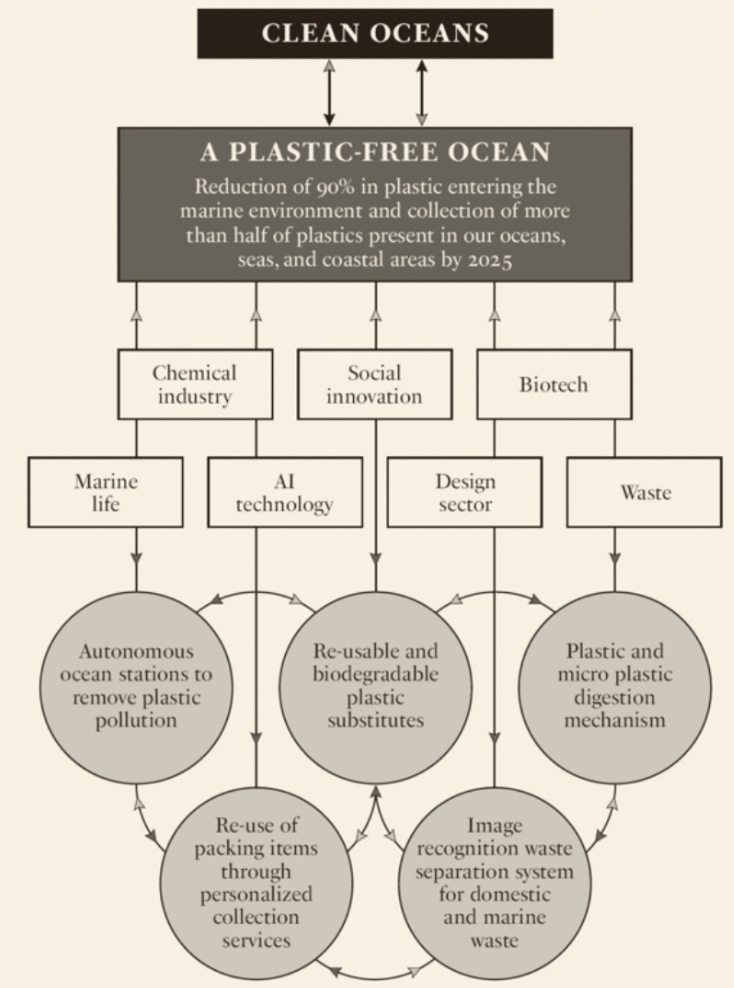Define a new standard: Mission investing
This article is derived from the book “Mission Economy: A Moonshot Guide to Changing Capitalism (Mariana Mazzucato)”.
1. Mission economy
The book argues that we should strive for a more efficient form of capitalism or political economy. This is based on a “mission-oriented approach where the economy is driven by public purpose and citizen engagement”. The U.S moon landing is taken as the example where the public and private sector collaborated successfully towards a shared mission, in which close cooperation and adaptation overcame problems and catalyzed innovation.
The author identifies seven key pillars to create this new paradigm:
Value: it must be “collectively created”
Markets: governments should have a shaping-market approach rather than fixing (e.g., Market failure theory (MFT))
Organizations: dynamic capabilities not only for the private sector but also for public organizations (prioritize and develop internal public capabilities rather than outsourcing tasks (i.e., to consulting firms)
Finance: outcomes-based budgeting which requires a long-term approach. Missions help spending and investment go towards the same direction to fulfill broader social goals.
Distribution: sharing risks and rewards. A focus on a “predistribution” risks and rewards mechanism rather than a “redistribution” approach, implies “getting the conditions right in the first place compared to making redistribution or corrections afterwards”.
Partnership: purpose and stakeholder value. This view focuses on “rewarding every stakeholder: workers, the communities and the environment.”
Participation: open systems to co-design our future. Present and future missions must be designed more in a bottom-up way where citizen engagement and open debate are key to shaping a common purpose or “grand challenges” (i.e., figure 5) of these missions. Even if open systems are characterized by ambiguity and uncertainty, they are central for an open and participatory organization.
2. Mission investing
I would like to clarify first what notions will be added or modified on top of the “mission-oriented approach” by Mariana Mazzucato for Hani and its ecosystem.
Firstly, governments will not play a key role, it will rather be the decentralized organization that will define the future challenges and missions of the project’s network. Also, while referring to “open systems”, the use of blockchain technology and distributed consensus mechanism will enable bottom-up proposals and ideas. All this network participation will contribute to designing and conducting Hani’s missions while nurturing its flywheel (https://haninewsletter.substack.com/p/investment-vehicle-all-components).
Mission Investing is built around shared missions across all the network. This means funds are allocated towards fulfilling a common mission, also called the “direction”. In other words, missions unlock the potential of solving together greater goals through cross-sectoral collaboration from network members and the constant pursuit of innovation.
The key guidelines are the following. The permissionless and decentralized network will shape missions. Then, through the application of smart contracts, Hani’s economy will ensure a fair allocation of shared risks and returns regarding one’s investment and its contribution to value creation (no need to rely on a centralized entity = single point of failure).
Mission Investing is about long-term oriented strategies. This implies taking risks and experimenting with a whole new approach of capital allocation. Thankfully, there is room for trial-and-error regarding this new vision of investing around a common purpose with the help of innovative technologies (i.e., blockchain and distributed consensus).
Another point to take into consideration is to set new dynamic models for investments’ evaluation. Since blockchain enables full transparency and thus on-chain metrics tools (i.e., number of transactions, number of users, number of validators, amount of fees), HANI’s network will take the best of it to make available occasionally those reports.
3. Mission map schemes
The mission-oriented approach is represented in a more visible manner below, with Figure 5 as the basic framework and Figure 8 as a concrete example.
Figure 5: A mission map
Figure 8: A mission map for ‘Life below Water’ (SDG 14)






